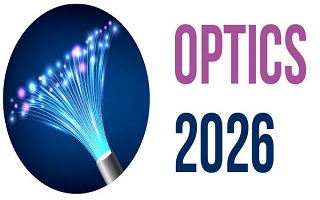3rd International Conference on
Optics and Laser Technology
October 29-30, 2026 | Berlin, Germany

Optics 2026

Albaha University, Saudi Arabia
Abstract:
The performance of InAsP quantum dot (QD) lasers is significantly influenced by growth temperature, impacting their optical and electrical properties. This study systematically explores the effects of growth temperatures ranging from 400°C to 650°C on key laser parameters, including emission wavelength, bandgap energy, threshold current density, and optical gain. Results indicate that increasing the temperature reduces the bandgap energy from 1.35 eV to 1.20 eV, causing a redshift in emission wavelength from 750 nm to 800 nm, at a rate of approximately 10 nm per 50°C rise. Moreover, higher growth temperatures lead to an increase in threshold current density by about 0.5% per °C due to enhanced non-radiative recombination, including carrier leakage and Auger recombination, which degrade laser efficiency. Additionally, optical gain diminishes with temperature due to inhomogeneous broadening and defect-related carrier losses. These findings provide critical insights into optimizing InAsP QD lasers for optical communications, biomedical imaging, and photonic integration. The study highlights the necessity of precise growth temperature control to improve efficiency, stability, and spectral tunability, contributing to the advancement of next-generation optoelectronic systems
Biography:
Nawal Al Malky obtained a Ph.D. in Laser Physics from King Abdulaziz University. Her research focuses on advanced laser applications and quantum optics. She has published five distinguished research papers in reputable scientific journals, significantly contributing to the field. She is currently a faculty member at Al Baha University, where she plays an active role in advancing scientific research and educating future generations in physics.
